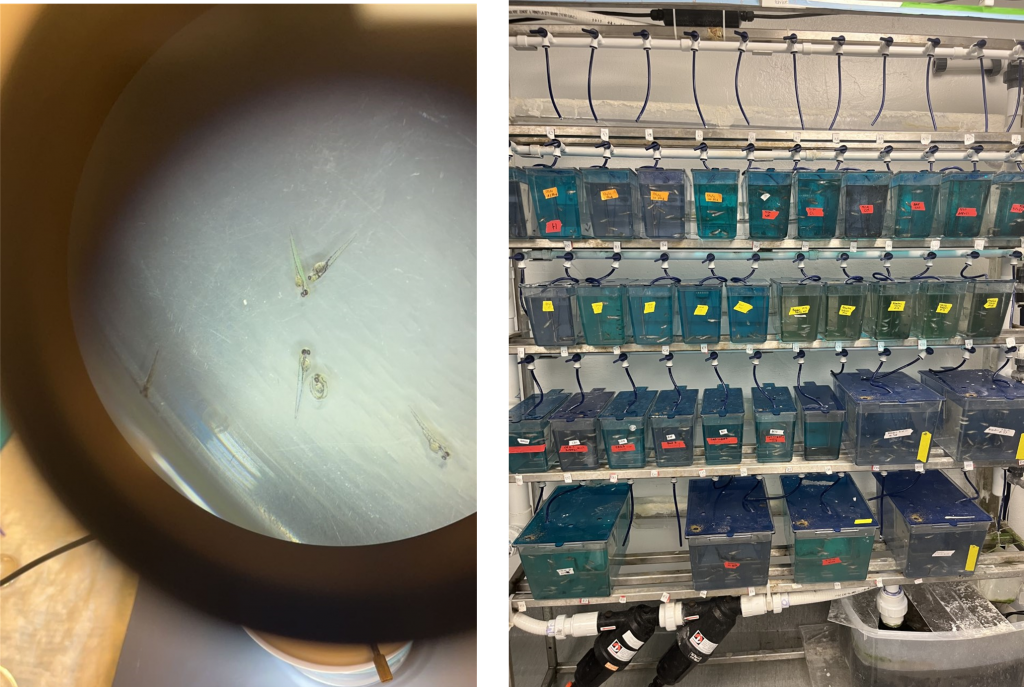By Alex Stickler, Summer Research Intern in Dr. Ed Levin’s Lab
This summer I worked on Project 2 in Dr. Ed Levin’s lab and aided in several of their ongoing projects, primarily focusing on their metal and polycyclic aromatic hydrocarbon (PAH) mixture study. Individually, these chemicals are both shown to affect neurobehavioral development, but little is known as to how exposure to a mixture of these chemicals may affect individuals. The purpose of this project is to better understand if exposure to a mixture of chemicals is worse than exposure to the chemicals individually, or if you can even predict the effects of these exposures.
The study looks at two PAHs (benzo[a]pyrene or BAP and fluoranthene), and two metals (cadmium and lead), and administered exposures of these 4 mixture/PAH combinations to embryonic zebrafish. Zebrafish are small freshwater fish that are commonly used in behavioral neuroscience and toxicology research because they can easily be given chemical treatments, and because they develop at a faster rate than mammalian models like rats so it does not take long to be able to run tests and notice behavioral deficits. My main task within the project has been to conduct behavioral assessments on the zebrafish at various stages of development. I created chemical mixtures of cadmium and fluoranthene and administered these to zebrafish embryos.

I also worked on a separate project where THC was administered to male rats for a 28 day period for either 2 days a week, or 7 days a week to social/casual users, and daily users of marijuana, in addition to a control group that was not exposed. I also helped run behavioral tests on rats whose grandfathers were administered THC and took organ samples from those rats offspring to study any health effects in the next generation. The rats were tested on several behavioral tests to determine what behavioral differences there were between different levels of THC intake and between generations.
I really enjoyed participating in research that is relevant in my personal life and the community around me. Many parts of Durham have high levels of both cadmium and lead but learning more about exposure to mixtures is crucial in truly understanding the health implications for humans. Ultimately, the work will hopefully lead towards understanding what has to be done to reduce exposure to these environmental toxins. I look forward to continuing my research experience and working on this project during the academic school year.





